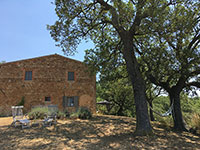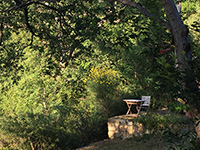A swarm of bees at Casa Vacanze Podere Santa Pia | Worker bee |
Bee colonies
The queen is the only sexually mature female in the hive and all of the female worker bees and male drones are her offspring. The queen may live for up to three years or more and may be capable of laying half a million eggs or more in her lifetime. At the peak of the breeding season, late spring to summer, a good queen may be capable of laying 3,000 eggs in one day, more than her own body weight. This would be exceptional however; a prolific queen might peak at 2,000 eggs a day, but a more average queen might lay just 1,500 eggs per day. The queen is raised from a normal worker egg, but is fed a larger amount of royal jelly than a normal worker bee, resulting in a radically different growth and metamorphosis. The queen influences the colony by the production and dissemination of a variety of pheromones or "queen substances". One of these chemicals suppresses the development of ovaries in all the female worker bees in the hive and prevents them from laying eggs.
|
 |
 |
 |
||
Queen bee (center)
|
Bee collecting pollen
|
Larger drones compared to smaller workers
|
||
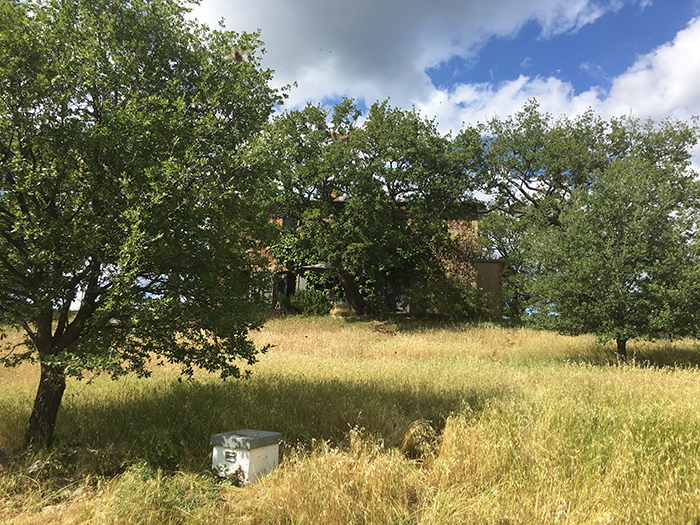 |
||||
The first hive at Podere Santa Pia
|
||||
 |
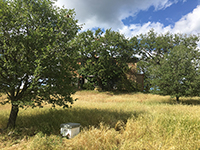 |
|||
| A swarm about to land | A swarm attached to a branch
|
How to capture a swarm | ||
|
||||
Podere Santa Pia |
Colline sotto Podere Santa Pia |
|||
 |
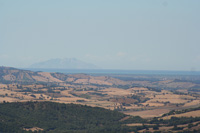 |
 |
||
|
||||
Mappa Podere Santa Pia | Ingrandire mappa
|
||||
|
||||
Questo articolo è basato sull' articolo Beekeeping dell' enciclopedia Wikipedia ed è rilasciato sotto i termini della GNU Free Documentation License.
|
||||

